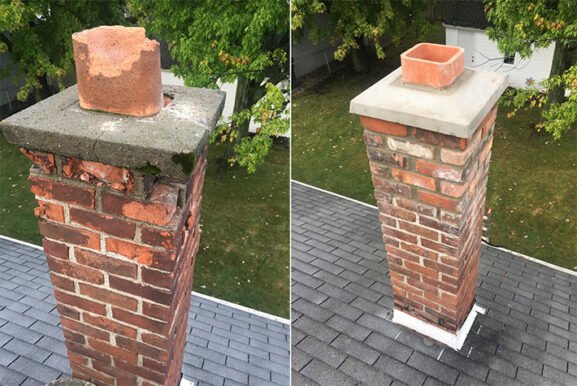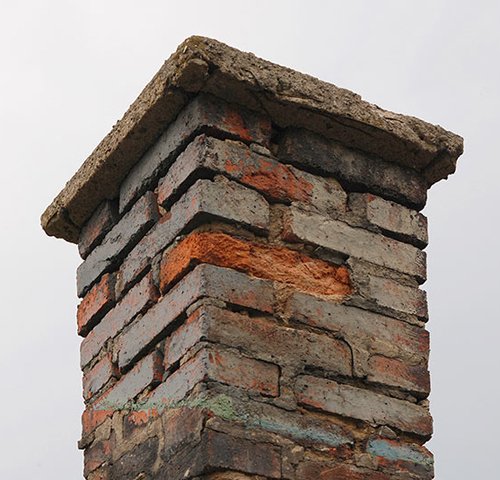Why Chimney Caulking Repair Deserves Your Attention Before Damage Escalates
Key Takeaways
- Chimney caulking repair seals small gaps and prevents serious structural problems
- Neglecting deteriorated caulking can lead to costly water damage and interior leaks
- Seasonal weather cycles in areas like New York and New Jersey accelerate caulk failure
- Routine inspections and targeted repairs extend chimney life and protect your home
Understanding the Role of Caulking in Chimney Health
Caulking plays a critical but often overlooked role in maintaining a watertight, weather-resistant chimney structure. It seals the joints where masonry meets metal flashing, crown edges, or other adjoining materials. Over time, exposure to sun, moisture, and temperature fluctuations causes caulking to shrink, crack, or separate. Once these gaps appear, they allow water intrusion that can wreak havoc on both the chimney and the home’s interior.
Caulking failure often starts subtly, but the effects compound quickly. Water seeps into mortar joints, degrades flashing, and compromises adjacent roofing materials. Left unaddressed, this small issue can lead to extensive masonry deterioration or even mold growth inside walls. That’s why chimney caulking repair is a foundational part of any well-rounded home maintenance strategy.
Signs That Chimney Caulking Needs Repair
Many homeowners don’t notice a caulking issue until after visible damage has occurred. However, knowing what to look for can help you act early. Here are some common warning signs:
- Gaps between chimney flashing and brickwork
- Cracked or peeling sealant around the crown or flue
- Stains on interior walls near the fireplace
- Persistent musty odors indicating trapped moisture
- Efflorescence (white powdery residue) on chimney surfaces
If you see any of these indicators, it’s time to schedule a closer inspection. While caulking repair may sound minor, it serves as the first line of defense against far more expensive issues like water infiltration or brick spalling.
Common Causes of Caulking Failure in Chimneys
Chimneys are constantly exposed to the elements, making their sealants especially vulnerable. Weather is the biggest factor in caulking degradation. In colder regions like New Jersey and New York, the freeze-thaw cycle causes caulk to expand and contract, weakening its adhesion over time.
Other contributing factors include:
- UV radiation from direct sunlight
- Improperly applied caulking during previous repairs
- Vibrations or structural shifting in the roofline
- Use of low-quality or incompatible sealants
Professional chimney technicians understand how to select the right type of caulk depending on the chimney’s materials and local climate conditions. Using the wrong product or skipping proper prep steps can lead to a fast return of the problem.
How Professionals Handle Chimney Caulking Repairs
A well-done caulking repair job starts with thorough cleaning. All old, brittle, or peeling caulk must be fully removed before applying new sealant. Professionals use wire brushes, solvent, or heat tools to clear away remnants without damaging nearby surfaces.
Once the surface is prepped, a high-grade exterior-grade silicone or polyurethane caulk is applied to the joints. These materials offer superior flexibility and adhesion, even in extreme weather. The technician ensures a smooth, continuous bead and may use tooling techniques to press the sealant deep into the joint for long-term durability.
For critical junctions, such as where flashing meets brickwork, pros may also incorporate flashing tape or additional waterproof membranes to enhance the seal.
Why DIY Isn’t Always the Best Choice
Some homeowners may consider caulking repair a DIY-friendly task, especially if the damage seems minor. While it’s true that applying sealant looks straightforward, chimney caulking involves working at height and often in difficult-to-reach areas. It also requires a nuanced understanding of building materials, thermal expansion, and long-term adhesion properties.
More importantly, surface-level fixes often fail to address deeper issues like hidden water damage, degraded flashing, or mortar joint decay. Hiring a qualified chimney specialist ensures that repairs are done safely and comprehensively, preventing repeat problems down the line.
For more context on the risks of improper caulking and flashing failures, this article by Fine Homebuilding provides detailed illustrations of proper sealing techniques and potential problem zones.
Seasonal Timing and Regional Considerations
The best time for chimney caulking repairs is during mild weather, ideally in spring or early fall. Caulk adheres best when temperatures are moderate and surfaces are dry. This is especially relevant in the Northeast, where harsh winters and humid summers speed up sealant deterioration.
If you live in an area prone to snow or coastal rains, like parts of New York or New Jersey, seasonal inspections become even more critical. Moisture intrusion during colder months can freeze inside cracks, leading to structural damage that is both difficult and expensive to correct. Being proactive with maintenance now can prevent emergency repairs during winter storms.
Long-Term Protection Through Preventive Maintenance
Caulking repair is not a one-time fix. Like any other part of your home’s exterior, the chimney requires periodic evaluation. Experts typically recommend chimney inspections at least once a year, especially if your home is exposed to extreme weather or has older construction.
Incorporating caulking repair into a regular chimney maintenance routine can extend the life of the masonry, flashing, and even the surrounding roofing materials. When caught early, repairs are affordable and fast. Delaying them often means higher costs and greater risk to your home’s structural integrity.
Choosing the Right Approach for Safer, Drier Chimneys
Taking chimney caulking repair seriously is one of the most effective ways to preserve your home against long-term water damage. It’s not just about sealing a few cracks — it’s about reinforcing your home’s barrier against unpredictable weather, shifting seasons, and time itself.
Whether you’ve spotted early warning signs or simply want peace of mind going into another winter, a timely professional inspection followed by targeted caulking work is a smart move for any homeowner. Think of it as investing in the long-term health of both your chimney and your home.


